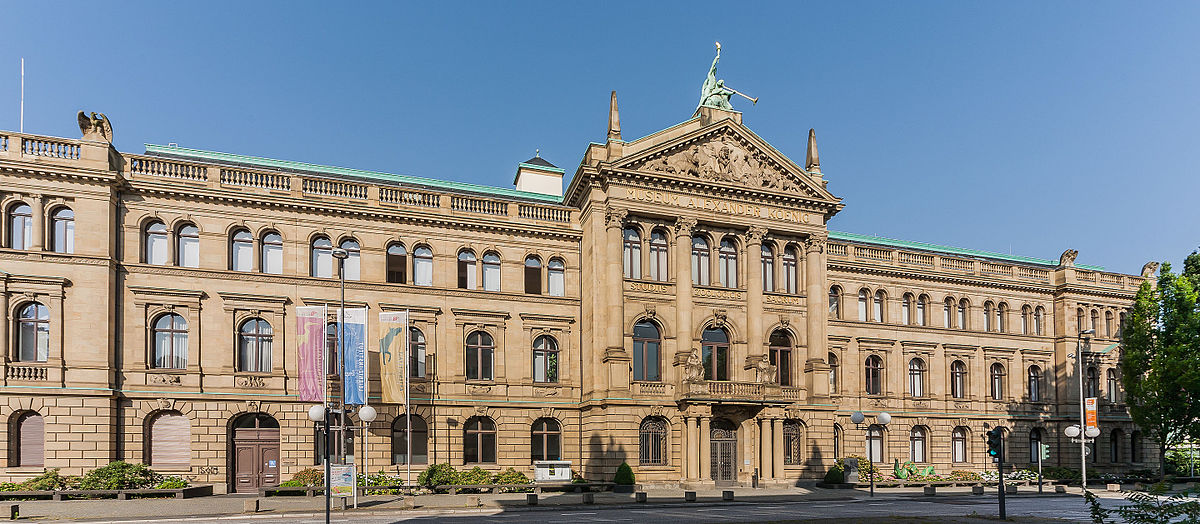
The Leibniz Institute for the Analysis of Biodiversity Change (LIB) is one of the eight natural history research museums of the Leibniz Association. It comprises the Zoological Research Museum Alexander Koenig – Leibniz Institute for Animal Biodiversity (Museum Koenig), Bonn, and the former Centre of Natural History (CeNak) of the University of Hamburg, which were merged into the LIB on 1 July 2021.
The LIB is dedicated to researching biological diversity and its changes, the findings from which have illuminating relevance for society as a whole. The goal is to find solutions for the conservation of ecosystems and species in order to preserve the basis of life as we currently know it.
The collections comprise 15 million objects from the fields of zoology, geology-palaeontology and mineralogy, which have been collected over centuries in all parts of the world. LIB’s collections give a comprehensive impression of the diversity of living things on Earth. They document the changes and the sometimes dramatic decline of species in habitats that are influenced by humans and climate change. The large number and diversity of the specimens make the LIB a reference center for global biodiversity research. They are made accessible, researched, consistently developed and digitally recorded.
In Bonn a major collection focus is epicontinental animal species, especially in African and Asian taxa. There are also comprehensive reference collections from European regions. They include vertebrate and arthropod specimens as well as tissue and DNA samples. The collections are divided into dry collections (vertebrate dermoplastics and bellows as well as skeletal material, needled arthropods, microsamples), wet collections in ethanol (vertebrates & arthropods, additionally tissue samples) and the biobank (frozen or ultracold tissue/DNA collections). They are supplemented by extensive digital image data collections as well as historical documents and evidence in written form (Biohistoricum). In addition, there is a fundamental responsibility for the documentation of the regional fauna of the Rhineland as well as the integration of evidence from Germany-wide and European monitoring programmes.
The Hamburg collections include not only zoological objects but also objects from geology-paleontology, including the amber collection and mineralogy. The collections of fish, ungulates, crustaceans, mites, tunicates preserved at the Hamburg site for example are among the most important of their kind worldwide. The earthworm collection is even the richest in types worldwide. The mineralogical collections in Hamburg include a large number of different minerals, for example samples of meteorites. More than 100,000 fossil preserved objects are kept in the geological-palaeontological collections in Hamburg, which tell the story of life on our planet.
Both LIB sites are equipped with state-of-the-art lab infrastructure for molecular, morphological and palaeontological research, as well as advanced post processing procedures of the acquired data.
The molecular labs house basic DNA / PCR equipment, as well as infrastructure for automated, high-throughput DNA and RNA isolation and liquid handling. Visitors can draw on experience in isolating DNA from ancient and environmental samples. Workflows for anchored hybrid enrichment and transcriptomic and genomic library production for NGS are well established. For endangered species, or for HTS applications, viable cells and biopsies can be processed and stored.
The morphological facilities include labs for SEM and histology, X-ray cabinets, and tomography facilities equipped with several μCTs for a wide range of applications. There is great expertise in post processing data for example with advanced 3D reconstruction, geometric morphometrics or finite element analysis.
LIB is heavily engaged in digitization of the specimen collections. IT resources include high performance computing clusters, a virtualised server infrastructure for web services, data maintenance and archiving.
Katherina Wipfler, k.wipfler@leibniz-zfmk.de
Bonn, Germany
Hamburg, Germany